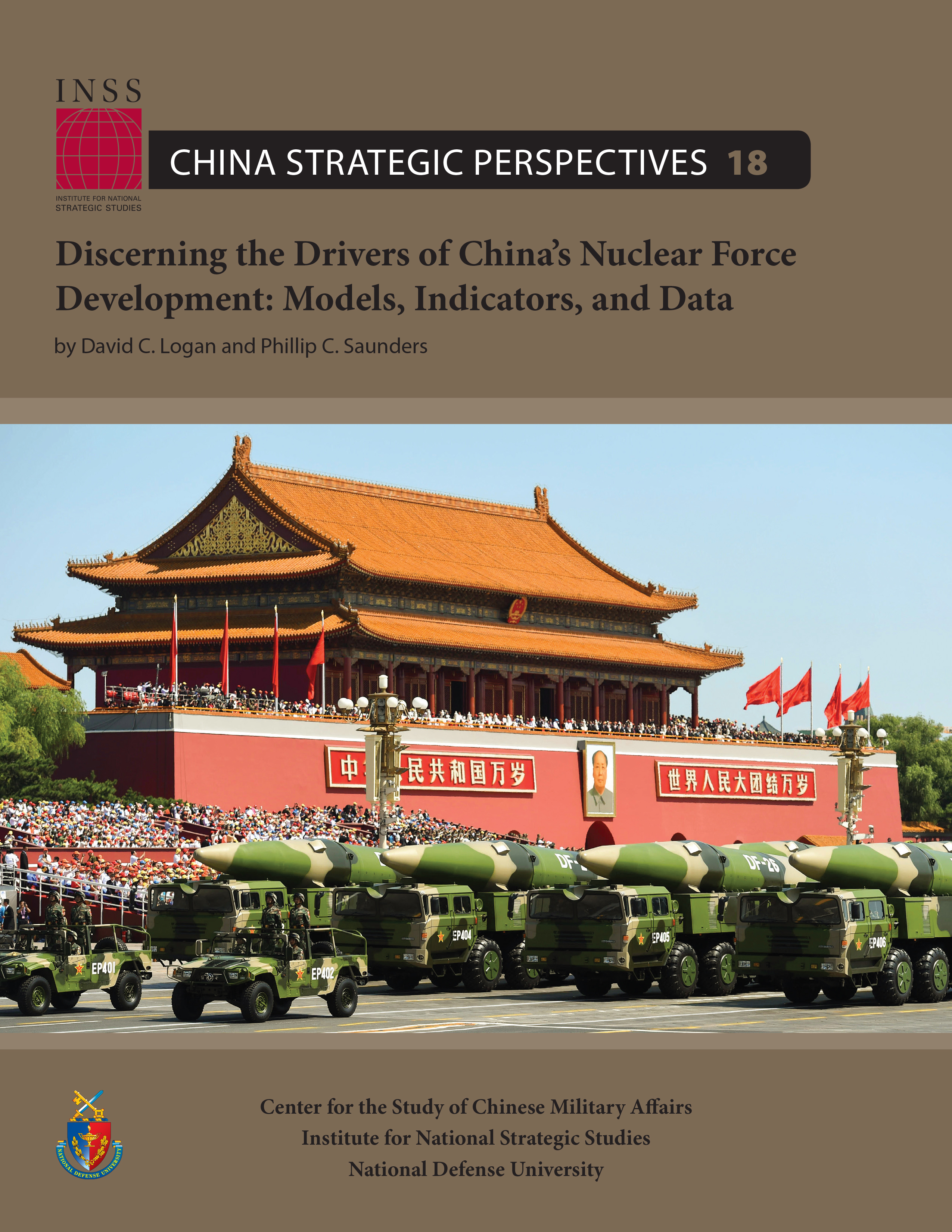Download PDF
Executive Summary

For decades following its first test in 1964, China maintained a small nuclear force and a doctrine emphasizing deterrence and no-first-use of nuclear weapons. China has recently embarked on an unprecedented campaign of expansion and modernization, which is changing the size, structure, and operational posture of its nuclear forces. The growing discrepancy between China’s restrained declaratory policy and advancing nuclear capabilities raises important questions about the status and future trajectory of China’s nuclear forces, with major implications for the United States.
Competing Models to Explain China’s Nuclear Force Development
This study addresses these issues by developing six competing models of China’s nuclear strategy: 1) secure second strike, 2) nuclear shield, 3) Great Power status, 4) theater deterrence, 5) bureaucratic politics, and 6) nuclear superiority. Each model implies a different set of drivers, goals, and resulting force structures:
- In the secure second-strike model, China seeks to maintain a reasonably secure nuclear deterrent in the face of advancing adversary capabilities. In this model, actual and projected advances in U.S. offensive and defensive capabilities increase the nuclear force requirements for a survivable deterrent.
- The nuclear shield model is a stronger version of the secure second-strike model. Here, China seeks not only to maintain a secure second strike to deter strategic nuclear attacks but also to use a more survivable and capable nuclear force to deter adversary limited use of theater nuclear weapons and conventional military intervention to gain freedom of action, particularly in a conflict over Taiwan.
- The Great Power status model posits a China no longer content with a “lean and effective” deterrent focused on maintaining a survivable second strike and that is now pursuing a nuclear force more like U.S. and Russian nuclear forces for prestige and status reasons.
- The theater deterrence model sees China fielding forces capable of executing battlefield nuclear strikes either to redress a perceived capability gap that might weaken deterrence of lower-level nuclear strikes or to develop military leverage over other states.
- The bureaucratic politics model understands China’s nuclear forces and strategy as the result of bargaining between the bureaucratic actors involved in setting nuclear policy, such as civilian political leaders, the different military services, the nuclear weapons establishment, and civilian strategists.
- The nuclear superiority model sees China seeking to achieve quantitative and qualitative dominance over other nuclear-weapon states, at either the regional or global level.
For each of the six models, we develop predictions for the features of the nuclear forces that would be most likely to emerge under that model. We also identify additional observable indicators of other aspects of China’s approach to nuclear force development. These include sensitivity to U.S. policy, nuclear infrastructure, doctrine and signaling, policymaking and process, and supporting elements.
Assessing the Explanatory and Predictive Power of Competing Models
Based on a thorough review of the secondary literature, Chinese primary sources, and new open-source data, we test the predictions of each model against China’s current and projected nuclear force structure and the assessed values of the observable indicators.
We find strong evidence for the secure second-strike, nuclear shield, and Great Power status models. We find weak support for the bureaucratic politics model. We find that the theater deterrence and nuclear superiority models have the least support.
Implications for China’s Nuclear Force Development
- China is likely to continue to increase the overall size of its nuclear forces to increase their survivability, to deter U.S. military threats and intervention, and to bolster its status by differentiating itself from second-tier nuclear states.
- Great Power status drivers might eventually encourage China to seek both quantitative and qualitative parity with U.S. and Russian nuclear capabilities.
- A decision to seek quantitative parity might be constrained by the increased costs and operational risks that accompany a larger nuclear force, tradeoffs with conventional force modernization, and political costs given China’s desired image as a peaceful power different from the superpowers.
- A decision to deploy low-yield or tactical nuclear forces would signal a significant shift in Chinese thinking about the military and political utility of these weapons. Implications for U.S. National Security Policy
- China is determined to maintain a survivable second-strike capability. The United States should anticipate that China will respond to advances in U.S. offensive nuclear capabilities and ballistic missile defense systems and factor these responses into its investment decisions.
- A Chinese nuclear shield intended to deter U.S. intervention and nuclear use would place a greater premium on the local conventional military balance and force U.S. policymakers to make difficult choices about allocating defense dollars across nuclear and conventional forces.
- U.S. nuclear force development will set the benchmark for what it means to be a nuclear Great Power; China is likely to seek to match or outpace perceived U.S. technological advances to showcase its status as an aspiring superpower.
- China will likely remain reluctant to enter arms control negotiations if it views such agreements as constraining its efforts to enhance force survivability or limiting its prestige by locking it into an inferior position vis-à-vis the United States and Russia.
- Given China’s focus on prestige, attempts to enlist Chinese participation in arms control should highlight the distinction that comes from participating in arms control negotiations with the nuclear superpowers as a near peer rather than as a second-tier nuclear power.
Future Directions for Research
Our analysis relies solely on open sources, which, while valuable, have inherent limitations. The framework presented in this report could potentially employ alternative and updated data sources to validate or revise our findings. The analysis could be repeated as more information about Chinese nuclear force modernization becomes available over time, or U.S. intelligence analysts could replace our open-source assessments with classified data and recode the values for China’s current and projected nuclear force structure and the additional indicators.
Read More →